Behind the moves
of How She Move:
Interview with
film director Ian Iqbal Rashid
March 4, 2009
 Jason Roberts: So,
first off congratulations on being nominated for the Shaw Rocket
Prize for How She Move...
Jason Roberts: So,
first off congratulations on being nominated for the Shaw Rocket
Prize for How She Move...Ian Rashid: Thank you. J.R.: Now, How She Move is a film about step dancing, but it's also a film that speaks a lot about community -- specifically between ones community and one's family -- and how the interplay between the two, kind of work together in shaping the moments in our lives that determine how we see ourselves in the world and our goals. Would you tend to agree with that? 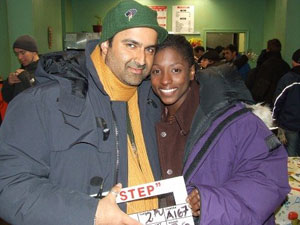 I.R.:
Yeah, absolutely! And, the film is also about a young woman whose
family no longer believes in the power of their community to
actually help them and enhance their lives. And, though a series of
circumstances, Raya, our heroine, is forced to come back to the
community that she's trying to leave behind, and actually
reconsiders and in the end reclaims it, and then brings the rest of
her family in line with that. I.R.:
Yeah, absolutely! And, the film is also about a young woman whose
family no longer believes in the power of their community to
actually help them and enhance their lives. And, though a series of
circumstances, Raya, our heroine, is forced to come back to the
community that she's trying to leave behind, and actually
reconsiders and in the end reclaims it, and then brings the rest of
her family in line with that. J.R.: Now many people today often blame the media for manufacturing stereotypes about black youth. How did working on a film that really focuses on black teens, factor into your vision as a director in terms of how you wanted the final version of the film to come across with the audience? I.R.: Well, you know, I grew up in a very mixed neighbourhood racially, and there was a huge black component to that community. And, in London where I live now, it's similar, with similar issues, where there's a huge focus on crime, and gangs, and black kids are often characterized as being, you know, "bad apples". But, I know that the reality is something quite different. Sure, there's conflict and there's problems, there often are in poor neighbourhoods, but I always think that it's dangerous and a mistake to radicalize that. I'm all too aware of all the great kids out there who are trying to kind of get ahead, and move on, and do good things with their lives, and who give back. And I wanted to focus on that in our film... 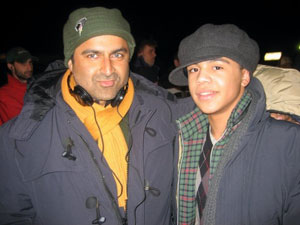 There
was, by necessity, in the script that Annemarie Morais wrote,
mention of gangs and crime with black youth, but I didn't kind of
want to build into the walls of the movie, I wanted it to be in a
deep background. I wanted the focus very much to be on the kids
[from the community] who are just trying to just get on with their There
was, by necessity, in the script that Annemarie Morais wrote,
mention of gangs and crime with black youth, but I didn't kind of
want to build into the walls of the movie, I wanted it to be in a
deep background. I wanted the focus very much to be on the kids
[from the community] who are just trying to just get on with theirlives. And even, if possible, try and create a context for the kids who have kind of "gone off the track". J.R.: You mention Annemarie Morais, (and, for those who don't know, [Annemarie] is the screenwriter for How She Move) and Annemarie actually attended York University and based How She Move off a short film called Steppin' that she made on step dancing while attending York back, I think, in the 90's. Have you seen this short film Steppin"? I.R.: No, Annemarie wouldn't show it to me. She was feeling too shy about it, so I never actually got to see it. But the whole film was kick-started by Annemarie's passion for stepping. It's something that she really loved, and believed in, and followed -- and it was infectious; we all kind of became huge step aficionados by the end of the movie. 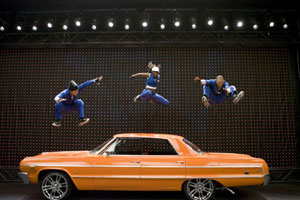 J.R.:
Step dancing is an art form that the characters in the film use to
express themselves and ultimately define themselves by among their
circle of friends... J.R.:
Step dancing is an art form that the characters in the film use to
express themselves and ultimately define themselves by among their
circle of friends...I know you expressed yourself through writing when you were young, and you've since gone on to see professional success as a writer, primarily in the U.K. where you're based... What's your take on writing as a form of creative expression? Like, in the process of making the film, did you start to see any similarities between the way the characters in the film use step, and the way you used writing when you were young say? I.R.: Absolutely. Part of the reason that I wanted to do the movie, was I really recognized a lot of myself in Raya, a lot of myself growing up, in Raya. You know, for her, step became a kind of outlet. Life for Raya was incredibly high-pressured. There were lots of parental expectations; there was death, a lot of sadness in her life. Yet she was really motivated to do well. So much so that she kind of put herself on this kind really fast engine moving forward and never kind of really stopped to take a moment for herself, to decompress, to express what was inside, as you say, and I think step provided that for her. And writing certainly did that for me: I was the child of new immigrants -- we were refugees when we came to Canada -- and life was hard. Along with the usual pressures of being kid, there were sort of financial and familial pressures as well and writing was something that was just mine, that was a little corner of my life that no one could gain access to, and it was a place where I could unburden myself, and also kind of experience joy and excitement and hope; yet I think, in many ways, it saved my life. J.R.: Would you like to see more young people today writing? 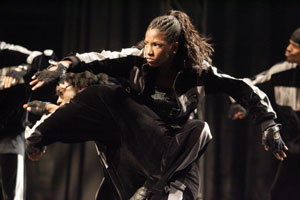 I.R.:
Yeah. I'm hugely encouraged. I think the way technology had moved on
since I was a kid, with the advent of the Internet, it sort of means
that kids have to write more! They want to write more. I mean even
if it's just and E-mail, or a text, or blogging. The just seems to
be more of a kind of impetuous on textual communication, on the
written word and that excites me. And I think that we’re gonna find
a whole bunch of new forms of expression through writing because of
all this technology. I.R.:
Yeah. I'm hugely encouraged. I think the way technology had moved on
since I was a kid, with the advent of the Internet, it sort of means
that kids have to write more! They want to write more. I mean even
if it's just and E-mail, or a text, or blogging. The just seems to
be more of a kind of impetuous on textual communication, on the
written word and that excites me. And I think that we’re gonna find
a whole bunch of new forms of expression through writing because of
all this technology. You know, I think there was a time about twenty years ago when kids weren’t reading or writing anymore, it was a real drag for them and I think new technology has kind of re-ignited the way we perceive reading and writing and to me that’s really exciting. J.R.: You mentioned you and your parents moved to Toronto as refugees. Now you were born in Tanzania and raised in Flemington Park in Toronto. So, you can obviously connect with the main character Raya, like you’d mentioned before, you know being a child of immigrant parents and the sort of unique challenges that it poses for kids in that situation today… Now, do you feel that being the child of immigrant parents can prevent first generation kids/ teens from taking the kinds of risks that Raya faces and ultimately takes in the film? I.R.: Absolutely. You know, I think there's so much pressure on first-generation kids to do well: to create a better life for themselves, to sort of make peace and rationalize their parents journeys, to validate their parents journey -- that was certainly true for me. You know, when you choose a career in the arts, you're basically facing, in the first instance, a lot of rejection, poverty. Not the kind of status you'd get from being a professional. I think it's hard on parents. And most kids are aware of the sacrifice that their parents make, and want to do good by them. You know I think the other reality is that, (and it's getting better) but when I was growing up, there were no people of colour in the entertainment industry and there were no kind of role models or paradigms that we could follow. So, it seemed like an even greater risk, because nobody had done it. But fortunately, that's changing, and I think with those examples in place, the pressure will be off those kids, and there will be evidence of people actually making it, living good lives, and contributing and hopefully we'll be sending of our most talented kids into some of those careers. J.R.: The film is set in Jane-Finch, but it would probably surprise a few people to know that Hamilton, Ontario actually substitutes in for some of the exterior shots. What was reason behind this? I.R.: Well, did you buy that it was Jane and Finch when you watched it? Or do you know Jane and Finch too well? J.R.: God, I've been here since I was two [years old], so I instantly knew the locations, not to be familiar. I.R.: Okay -- J.R.: Though when I was watching it -- I actually watched [the film] when it first came out, and then I watched it again recently. And the first time I watched it, I remember being a little bit confused, because it was really close, but I could tell that something was off... I.R.: Right, right, right... J.R.: ... But yeah, um, they're very, very close! 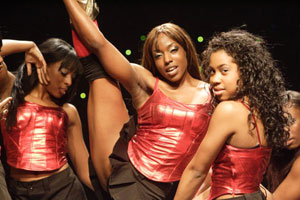 I.R.:
We had to shoot in Hamilton for simple financial reasons. We were a
very low-budget film, and Hamilton at the time was offering tax
credits to people who were wanting to film there. They were trying
to build up the local film industry, so we saved a bundle by
shooting there. But I really wanted -- you know I think Jane and
Finch has a very specific landscape and, in a way, I think it's an
almost elegant landscape the way the buildings are sort of isolated
from each other, and they're tall, and I think visually it looks
actually quite spare and very atmospheric and evocative and I wanted
to try and capture that in Hamilton, if possible. So yeah, we really
scouted around a lot until we found buildings that evoked that same
kind of bleak elegance that Jane and Finch has in the winter
sometimes. I hope we got close. I.R.:
We had to shoot in Hamilton for simple financial reasons. We were a
very low-budget film, and Hamilton at the time was offering tax
credits to people who were wanting to film there. They were trying
to build up the local film industry, so we saved a bundle by
shooting there. But I really wanted -- you know I think Jane and
Finch has a very specific landscape and, in a way, I think it's an
almost elegant landscape the way the buildings are sort of isolated
from each other, and they're tall, and I think visually it looks
actually quite spare and very atmospheric and evocative and I wanted
to try and capture that in Hamilton, if possible. So yeah, we really
scouted around a lot until we found buildings that evoked that same
kind of bleak elegance that Jane and Finch has in the winter
sometimes. I hope we got close.J.R.: Yeah, it's a very close match... Now, the Jane-Finch community has for a long time suffered a negative image among the public that residents of the area attribute to that way that the local press covers news about what goes on here. Now, efforts to change the image have been pretty well-documented, in many cases, kind of ”positive imaging" efforts have been pretty successful -- like Jane-Finch.com, for instance, has turned out to be a great success. How She Move depicts Jane-Finch not as, you know, some kind of American-style ghetto, which I think makes the film feel different somehow, and sets it apart from other films in the same genre. How do you think the Jane and Finch neighbourhood and Jane-Finchers come off to outsiders watching the film? I.R.: Well, you know, I think outside of Toronto, and outside of Canada, people don't know what Jane and Finch is. Perhaps they do elsewhere in Canada, but not outside. And, you know, I think, people were sort of fascinated by the world. Americans knew that it wasn't the States -- but there was lots that was familiar: there were black kids, there was music, there was dance. But there was, first of all, the kind of Jamaican inflection, that ran through the movie, which I think makes it very specifically more likely to be Canada anyway than the States, because there's such a significant community in Canada, and in Toronto particularly. And I think what the film did was it opened up interest in Jamaican culture and also, that aspect of Canada. Because beyond Canada, you know, people really perceive Canada as being “white”. I know that it's a big PR campaign to talk about Canada as being the most multiracial city in the world, but when I was showing this film to people in the U.K., for example, everybody was really surprised that there were black people in Canada! Their perception is that it's predominantly white, with maybe handful of immigrants. So, you know, I kind of hope that that perception of -- because the film opened in every territory in the world, just about --I hoping that perception of Toronto and Canada changed. But, you know, obviously, Jane and Finch is much more than its crime rate, there's a lot more going on. And I hope that your Web site, and films like ours, and other kind of cultural initiatives I hope will go a long way towards counterbalancing that perception; it's more than that, and it should be perceived as that, but its unfortunately only the bad stuff that gets the headlines. J.R.: There's a gentrified kind of re-branding that's happening right now with Jane-Finch, and the name has been sort of morphed into the name "University Heights". It was a plan that was set in motion officially last year by a local politician who sees the name of the community -- changing the name of the community -- as one way to improve the image of the neighbourhood. Now reaction within the neighbourhood has been pretty mixed, and its sparked debate over whether changing the name, could really make a difference. 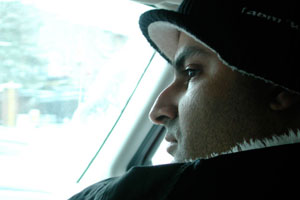 Now,
in How She Move, Raya is depicted as a young Jane-Finch resident who
is striving hard to get a good education in order to get out of the
community. There's a scene in the film with another character,
Michelle, where we learn that Raya thinks moving out of Jane and
Finch is essential to, you know, to achieving a better Now,
in How She Move, Raya is depicted as a young Jane-Finch resident who
is striving hard to get a good education in order to get out of the
community. There's a scene in the film with another character,
Michelle, where we learn that Raya thinks moving out of Jane and
Finch is essential to, you know, to achieving a betterlife for herself, and for her family. Now in light of all that's been happening regarding this kind of re-branding stuff, I was interested in finding out what your take was: Do you think young people from the neighbourhood should be working hard towards staying here to build a kind of better Jane-Finch, or do you think Raya's goal of “getting out” has its merits? In other words, what I'm trying to get at here is do you think that the film sends a message that success for people from Jane and Finch means moving away from their community instead of working towards improving it? I.R. Now, I'm kind of of two minds about it. Initially, when we first made the movie and it showed at Sundance, it had a different ending to the one that's there now. Initially, Raya, after she finds out that she got the scholarship to go to the private school, decides that she will in fact reject it, and stay in her community, and continue on. And, you know, we showed the movie at Sundance, which was mostly white, middle class, older audience, and people loved it, and loved the ending. And we kind of went there because the filmmakers believed that’s -- well, I'll speak for myself -- I certainly believed that, believe in that philosophy that one of the things that really hurts local schools right now is that the smart kids all get shipped out and either go to private school or their parents somehow get them into other neighbourhood schools, which are considered better and more privileged, and there's kind of brain drain that happens. And I think that that's really sad because I think smarter kids and more talented kids kind of help themselves. I went to what's now called Marc Garneau Collegiate in Flemingdon Park, and it was an incredibly impoverished school with lots of poor kids and lots of language issues and problems. But we continually did very well academically. We had kids who won national contests, and gotten into medical school, and I think it’s the kids that stayed behind and did well who kind of raised the bar and made it better for future generations. And that’s sadly changing now; the talented kids are being shipped out. But, going back to the film, what happened was that when we showed the film to audiences and tested it, the one thing that overwhelmingly bothered young audiences of colour, in particular, was that Raya had a chance and didn't take it, and it turned them off the movie and they didn't believe it. They didn't believe in it. And it got to a point where my personal beliefs about kids staying and giving back began to feel very kind of colonial. Like I was telling people what they should think and even our characters what they should believe in. So, in the end I kind of agreed to change it, because it seemed what our audiences believed and want in. But I'm kind of of two minds and I understand why they feel that way. I understand why an opportunity is something that should be grabbed. But, deep in my heart, I really believe that things don't get better unless we get to keep the smart kids at home and giving back as much as they're taking. J.R.: The dance sequences at the end of the film are pretty impressive. I know that you guys re-shot the last dance sequence mainly that last scenes of the dance sequences [at the end of the film]. I just wondered what it was like working on those dance scenes with SYTYCD's Tre Armstrong and pop singer Shawn Desmond. Are you still in touch with any of the other cast members? I.R.: Yeah. We'll all very much in touch with each other and trade news. And it's great to see everybody doing so well. Other than Shawn, the cast was pretty much completely unknown. Rutina Wesley, our lead, guess it was her first acting job, and Tre had done choreography and bits of dancing, but this was her first significant acting job. So, you know, it's great to see that the film has been kind of a launching pad for everybody. Shooting that final scene was a lot of fun. Initially, as I mentioned, we were incredibly low-budget, and I never had more than two or three hours to shoot any one dance scene. Whereas, you know, on a big Hollywood movie you'd get, like, a week. So, you know, the finale, which you so need in a dance movie to be kind of bigger and grander and more emotional as well as more acrobatic and flashy than all the numbers that cam before, wasn't really earning its punch. And when the film got bought by Paramount, we had a chance to re-dress that, and really make it much bigger and a way to punctuate the movie. And it was great because we were properly resourced, we had a bigger crew and extras so we could really kind of get a taste of what it would have been like if we'd worked that that all the way thorough. It was a lot of fun. J.R.: Do you have any helpful advice for aspiring Jane-Finch filmmakers, or first generation filmmakers? I.R.: Well, you know, I think, my big advice would be to just keep writing, get a hold of digital video cameras. Make stuff. Keep trying things out. You know, go to movies, even movie that aren’t necessarily your taste, or something that you'd go to normally. Use the Toronto Film Festival [TIFF] to really kind of learn about the range and distinctiveness in filmmaking from around the world. And try and find your voice thorough all that exploration. You know, I think in the end, the filmmakers that end up doing well are the ogles that have a distinctive voice and have the kind of confidence and ability to kind of push that through. Because there's a lot of people out there who want to be filmmakers. You need to stand out and I think the way to stand out is to be the most yourself you can be; but, that requires confidence. J.R.: What do you think of Jane-Finch.com? I.R.: Well, you know, I wasn't that familiar with it before, and I've been checking it out since we met, and I'm really impressed. It feels like a really professional operation, and I think it’s a great opportunity for residents to kind of make their mark by getting involved with it. I was just really really impressed by it. I haven't seen such a strong and entertaining and informational community Web site like this before. So, congratulations! J.R.: Well, thank you. Well, everyone there at Web site wants to thank you for taking the time out to chat with us. So, thanks. I.R.: My pleasure! 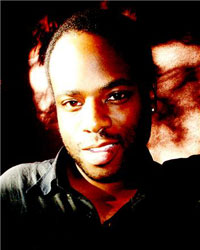 Interview by Jason
Roberts
Interview by Jason
Roberts
|
||||
